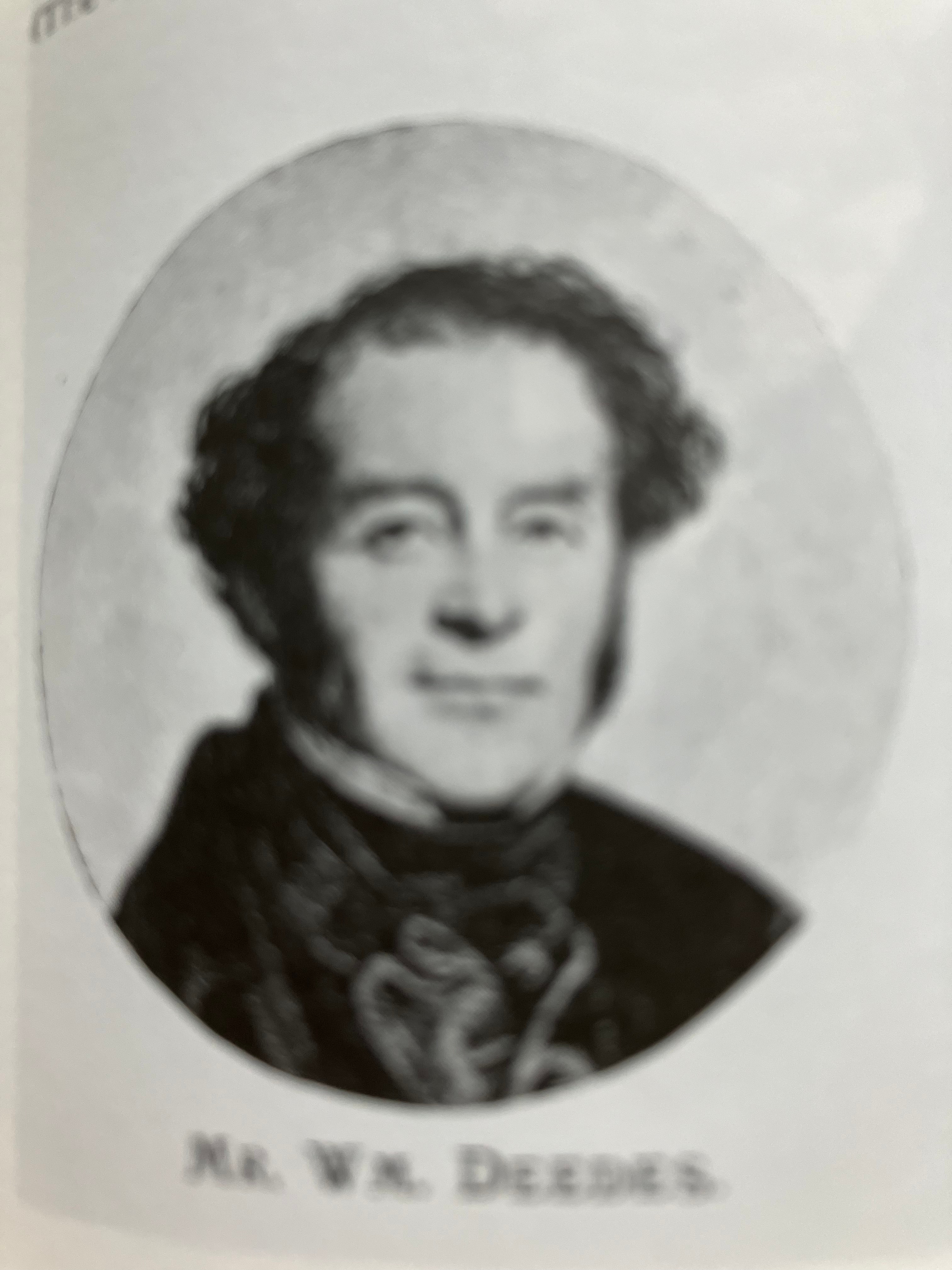2. John Deedes
Playing alongside John Willes in that match at Lord’s, if only for a few balls before Willes rode off in high dudgeon, was John Deedes, the second man in our chain of Kent cricketers. John Deedes, a right-handed batsman of modest success, is perhaps the least significant of all the links in the chain, and certainly not a great name in Kent cricket history, but his family over the years contributed a great deal to the game.
John Deedes played only a handful of games for teams that can be described as ‘Kent’, but crucially for our chain, he played with both John Willes and our next man in, Herbert Jenner, which some more accomplished cricketers of his time, notably his brother William and Jane Austen’s nephew George Knight, did not. The Deedes estate was at Sandling Park, near Hythe, which fortunately was large enough to accommodate the entire family, as John was one of eight brothers and nine sisters. Born in 1803, he would only have been nineteen years old when he played in the Willes match, and such is the number of his siblings that it is even possible that the “J. Deedes” in that match was another of his brothers, Julius. But probably not.
John Deedes only played 8 matches for ‘Kent’, and only one of those games was played within the county, at the Vine, Sevenoaks. Most of Deedes’ matches were played at Lord’s, and he rarely distinguished himself. He played for a variety of different teams, including Single v Married (he never married), Gentlemen v Players and twice for teams described as ‘England’. Lord Harris, in his ‘History of Kent County Cricket’, described him as ‘a good batsman’, although his top score was only 29 not out, and he never bowled in great matches. In 1826 he was called to the Bar, and played no more top class cricket after 1829. His brother William, who was seven years older than John, had a more distinguished cricketing career, and was elected president of M.C.C. in 1831, at a time when the club was establishing its pre-eminence in English cricket, largely because of the excellent quality of the Lord’s wicket. Three more names in our chain were also elected president of M.C.C. in later years.
The story of cricket in the late Georgian period is shrouded in clouds of uncertainty, much of it caused by the fire on 28 July 1825, which burnt down the pavilion at Lord’s and the vast majority of its archive. That is not to say that Lord’s was the only place where cricket was played, but the records of the club which staged the most prestigious matches of the era would have told us a great deal more about how the game was evolving at that time. Cricket was re-establishing itself as a pastime for the rich, and slowly, as a profession for the skilled artisan after the uncertainties of the Napoleonic wars, and clubs that were based around villages and towns, as well as those created by wealthy benefactors, were multiplying. The Deedes family were among those benefactors, although John himself devoted himself more to his legal work, mainly as Recorder of the city of Canterbury for 27 years. He died in 1885, aged 81.

Such is John Deedes’ contribution to Kent cricket and the life of the community in general that no image of him seems to be on the internet, and the best I could manage is this rather blurry one of his brother, William, who was also a better cricketer and local MP for many years. Still, John, not William, is the link in our chain.
0 Comments